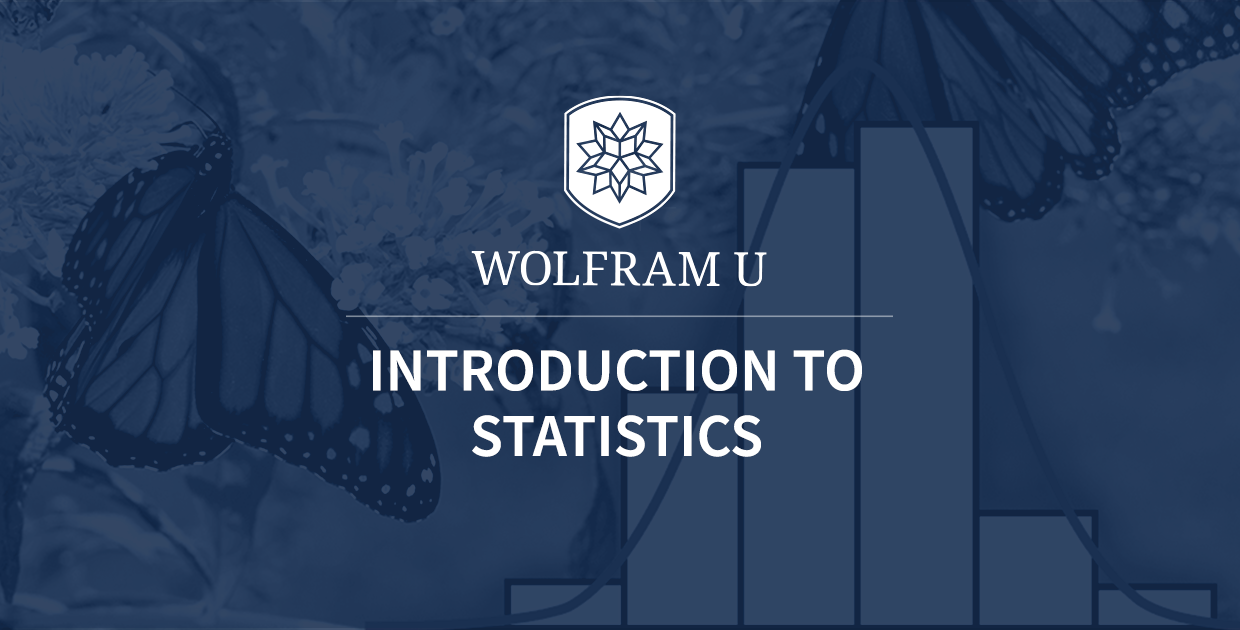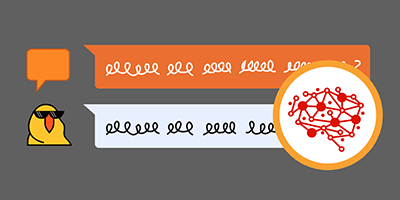Expand Your Understanding of Statistics with Wolfram Language

Statistics is the mathematical discipline dealing with all stages of data analysis, from question design and data collection to analyzing and presenting results. It is an important field for analyzing and understanding data from scientific research and industry. Data-driven decisions are a critical part of modern business, allowing companies to use data and computational analyses to guide their choices and direction, rather than subjective measures like intuition.
Motivation from History
When we were exploring ways to include introductory statistics topics in Wolfram U, I was thrilled when David Withoff, a longtime Wolfram colleague and content expert with statistics instruction experience at the university level, agreed to contribute to this project. David has provided some historical insights about the field for this article and shared his motivations for writing the course.
Although elements of statistics have been around since ancient times, and new and powerful methods continue to be developed, the core of what is today considered “classical” statistics was codified between 1890 and 1940 by Karl Pearson, who is often described as the founder of mathematical statistics, and many others, including Francis Galton, William Sealy Gosset, Ronald Fisher, Egon Pearson, Jerzy Neyman and their contemporaries. Hypothesis testing, confidence intervals and other concepts introduced during that period were gradually adopted in other fields, and by the 1980s were foundational throughout the sciences.
The tools of classical statistics provide mathematically elegant strategies for extracting precise information from data that might otherwise seem messy and chaotic. Statistics is a set of tools for revealing mysteries that are obscured by randomness.
Statistics has an undeserved reputation as a difficult topic, in part because its practice invariably involves lots of mathematical formulas. The concepts behind those formulas are really quite simple, and are in most cases little more than a codification of common sense, but it is easy to get lost in mathematical minutiae. A goal in teaching this topic is to emphasize the basic ideas behind what is being calculated and why it is of interest, and to separate those ideas from the mathematical machinery used in doing calculations.
Today, I am proud to announce an addition to the Wolfram U catalog of the free interactive course, Introduction to Statistics, that will help students all over the world learn and master this important subject and prepare for the AP Statistics Exam. This course investigates the basics and application of statistics for real-world scenarios. The course is designed to be compact and efficient, with a minimum of redundant examples and potentially distracting background. Topics follow what you would see in an entry-level college statistics course, but also takes advantage of Wolfram Language to do calculations and simulations to illustrate important concepts with concrete demonstrations.
Ready to get started? Click the following image to begin exploring the interactive course before reading the rest of this blog post.
About the Course Author
David Withoff received his PhD in theoretical physics from the University of Illinois and has been a longtime developer and contributor to Wolfram Language algorithms and documentation since the release of Mathematica 1.2 in 1989. In addition to his work at Wolfram Research, David has taught introductory statistics and computational physics at the university level, where he regularly used Wolfram Language examples in lectures and to create illustrations and demonstrations for students.
Overview
Students taking this course will receive an introduction to key statistical concepts. This includes standard topics like the basics of summarizing data, how to display and model quantitative and qualitative data, and working with confidence intervals and different-shaped distributions. Introduction to Statistics will also discuss some more advanced topics like probability and hypothesis testing, as well as experimental design and data collection.
Here is a sneak peek at some of the course topics (shown in the left-hand column):

We wanted to keep the course down to a reasonable length, and I expect that you will be able to finish watching the 47 short videos and complete the 15 quizzes in about three hours.
This course is designed to help students prepare for the AP Statistics Exam. The main mathematical prerequisites are understanding the meaning of plots of functions and data as well as elementary algebra and arithmetic. Algebra I (elementary algebra) and Algebra II (intermediate algebra) are sufficient preparation for this course. Additionally, we have assumed the ability to read and understand Wolfram Language inputs and outputs at a basic level. The course does not require being able to create those inputs.
Lessons
The core of the course is a set of 47 lessons, beginning with “Getting Information from Data.” This introductory lesson includes a discussion about what the field of statistics is and how one might apply it to real-world situations. The first few sections of the course explore topics in descriptive statistics, while the remaining sections are primarily about inferential statistics. The following video provides a preview of the look and feel of the course. The lessons discuss key concepts with interspersed examples illustrating the main ideas using Wolfram Language functions to verify solutions or visualize results.

Forty-seven videos is a lot! But they’re very short, ranging from two to five minutes in length, and each video is accompanied by a transcript notebook displayed on the right-hand side of the screen. Copy and paste Wolfram Language input directly from the transcript notebook to the embedded scratch notebook to try the examples for yourself.
Quizzes
Each section of the course ends with a short, multiple-choice quiz with 10 problems. The quiz problems are roughly at the same level as those discussed in the lessons, and a student who reviews the section carefully should have no difficulty doing well on the quiz.

Students receive instant feedback about their quiz question responses, and they are encouraged to try any method, including hand or computer calculations, to solve them.
Course Certificate
Students should watch all the lessons and attempt the quizzes in the recommended sequence because course topics often rely on earlier concepts and techniques. At the end of the course, you can obtain a certificate of completion (pictured below). The course certificate is earned after watching all the lessons and passing all the quizzes.

An optional final exam is also available at the end of the course. You can receive an advanced level of certification if you pass this exam. It represents proficiency in the fundamentals of statistics and adds value to your resume or social media profile.
A Building Block for Success
Mastering the fundamental concepts of statistics is integral for learners and students in fields involving data, including science and business. I hope that this Introduction to Statistics course will help you to achieve mastery and contribute to your success in your chosen field. We enjoyed creating this course and welcome any comments regarding the content, as well as suggestions for future courses.
Acknowledgements
I would like to thank, first and foremost, David Withoff, who drew on his classroom instruction experience for creating this collection of video lessons using his distinctive, elegant and thoughtful presentation and delivery style. I am also grateful to Devendra Kapadia for getting us started in the right direction, and to Abrita Chakravarty, Matt Coleman, Laura Crawford, Cassidy Hinkle, Arben Kalziqi, Mariah Laugesen, Joyce Tracewell, Yuting Qiu and others for their dedicated work on various aspects of the course. Shoutout to Florence Nightingale, who receives one of our first course certificates in honor of her innovative and early use of statistical methods in the 1850s to visualize data and bring about healthcare reform.
| Register for one of Wolfram U’s Daily Study Groups for more hands-on learning experiences. |




Comments